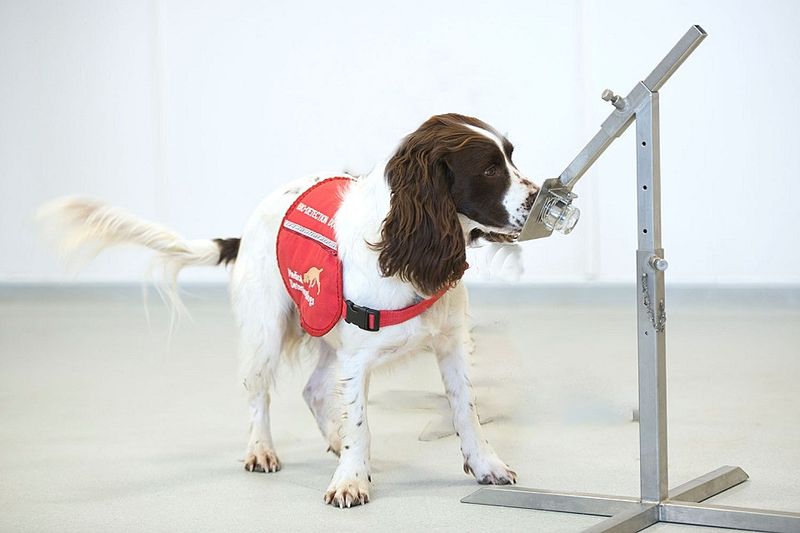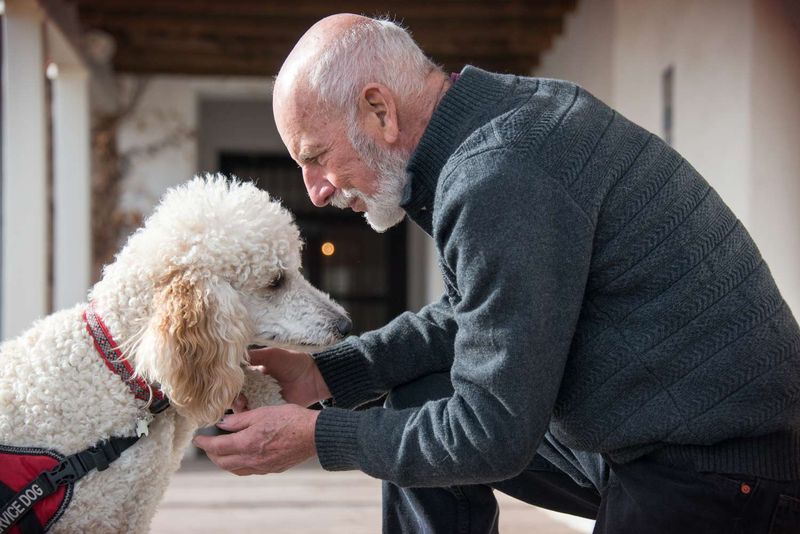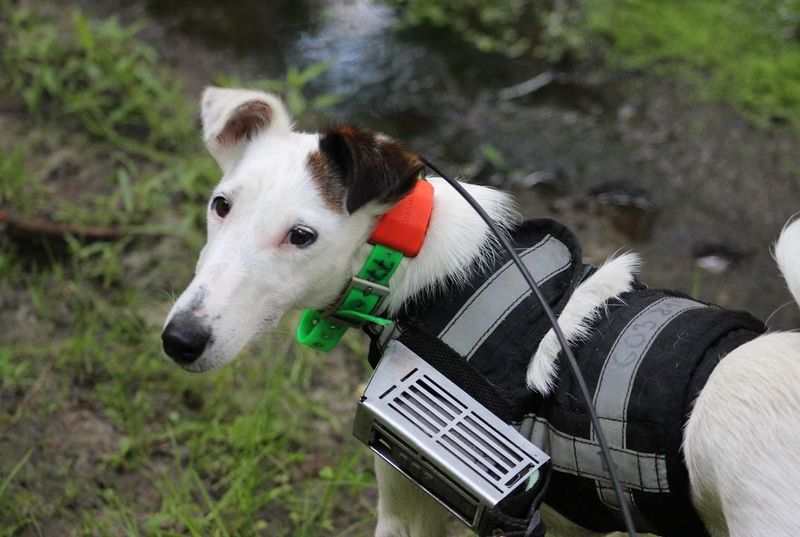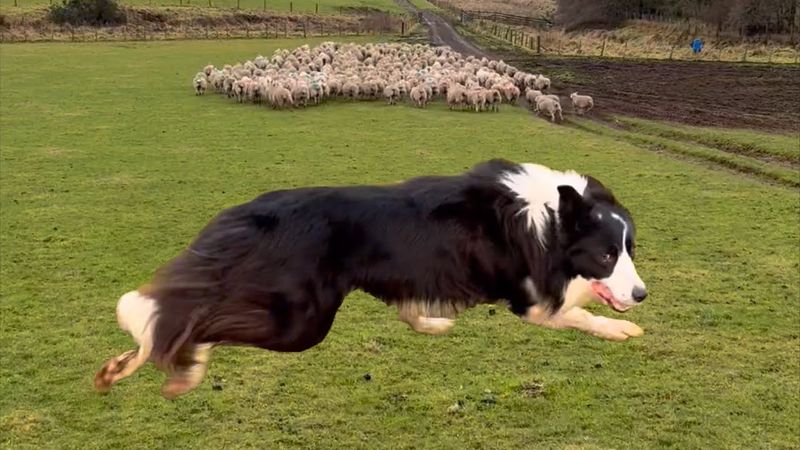Dogs have long been considered man’s best friend, and for good reason. They possess abilities that baffle scientists and delight dog lovers everywhere. From sensing earthquakes to detecting diseases, these skills are often beyond our understanding. This blog explores 13 such canine superpowers that continue to mystify experts. Whether it’s their uncanny ability to find their way home over vast distances or their seemingly telepathic connections with humans, these talents hint at a world of wonders we have yet to fully comprehend. Each item highlights a unique ability, offering insights into these extraordinary canine capabilities.
Earthquake Prediction
With an inexplicable knack for sensing seismic activity, some dogs seem to predict earthquakes before they happen. Their heightened senses allow them to detect vibrations and changes in the environment that go unnoticed by humans. It’s a phenomenon that has fascinated scientists, who are unable to pinpoint exactly how these animals achieve such a feat.
Imagine a hound suddenly alert, ears perked, moments before the earth begins to tremble. While we rely on technology, our four-legged friends astound with their natural instincts. Could this be a sixth sense, or is it simply a refined acute awareness?
Disease Detection
Dogs possess an incredible ability to sniff out diseases like cancer, diabetes, and even COVID-19. Their sense of smell is estimated to be thousands of times more sensitive than humans, allowing them to detect subtle chemical changes in a person’s body.
This remarkable skill is employed in medical settings, though science has yet to completely understand the mechanisms behind it. Canines trained in this field have saved countless lives, offering an early warning that can lead to prompt treatment. It’s a reminder of the profound bond between humans and their furry companions.
Telepathic Connections
The bond between a dog and its owner often feels telepathic. Dogs seem to know when their human is sad, happy, or in need of comfort. This intuitive connection has puzzled many, as dogs appear to read emotions without any verbal cues.
Theories suggest that dogs pick up on subtle changes in body language, tone, and scent, though the exact process remains elusive. This deep understanding fosters a unique relationship, where dogs often act as emotional barometers for their owners. Perhaps these connections go beyond the physical, touching upon something more profound and soulful.
Navigational Homing
Many stories tell of dogs traveling great distances to reunite with their owners, displaying an extraordinary sense of direction. This homing instinct is not fully understood, as dogs seem to navigate without maps or guides.
Could it be magnetism, scent tracking, or something entirely unknown? Science has yet to provide a definitive answer. These tales of reunion warm the heart, showcasing the incredible tenacity and loyalty of our canine friends. Their ability to traverse unfamiliar terrain to return home remains one of the great mysteries of the animal kingdom.
Emotional Support
Therapy dogs are renowned for their ability to provide emotional support and comfort, particularly in stressful environments like hospitals. Their presence alone can lower anxiety and improve mood, though the science behind this effect is not entirely clear.
These empathetic creatures seem to sense when someone needs a little extra love. Whether it’s a gentle nuzzle or a warm gaze, therapy dogs have a way of making even the toughest days a little brighter. Their calming influence is a testament to the healing power of the human-animal bond, leaving experts curious about the underlying mechanisms.
Weather Sensing
Many dog owners have witnessed their pets acting strangely before a storm, as if they can sense changes in the weather. Dogs often become restless or seek shelter before the first sign of rain, displaying an awareness that seems almost supernatural.
Scientists speculate that this could be due to their acute hearing and ability to detect changes in atmospheric pressure. Whatever the reason, the phenomenon adds to the mystique of canine intelligence. Their weather-sensing abilities provide an intriguing glimpse into the complex and often baffling world of animal behavior.
Seizure Alert
Service dogs trained to alert their owners of an impending seizure perform a life-saving role, yet the method they use remains shrouded in mystery. These dogs seem to detect changes in body chemistry or subtle signs unnoticed by humans.
The relationship between a service dog and its owner is built on trust, where the dog’s warning can prevent injury or death. Over time, this connection becomes a lifeline, showcasing the profound capabilities of these intelligent animals. Despite advancements in medical science, this area continues to intrigue and inspire curiosity.
Electromagnetic Field Detection
Some researchers believe that dogs can detect changes in electromagnetic fields, a skill that might explain their ability to anticipate natural disasters or find their way home. This area of study is still in its infancy, and the full scope of these abilities is yet to be uncovered.
Witnessing a dog reacting to invisible forces leaves many pondering the depths of canine perception. It suggests a sensory world beyond human comprehension, where dogs navigate through an intricate web of unseen energies. This hidden talent challenges our understanding of nature and the animal kingdom.
Intuitive Herding
Herding breeds like Border Collies exhibit an almost intuitive ability to control and guide livestock. Their movements are precise, their instincts finely tuned, yet the science behind their success remains partly undefined.
These dogs appear to understand complex instructions, adapting to the animals they work with. Watching a herding dog in action is witnessing a dance of coordination and skill, where commands and instinct blend seamlessly. The art of herding is an age-old practice that continues to awe those who experience it, raising questions about the true nature of intelligence.
Fear Detection
Dogs seem to have an uncanny ability to detect fear in humans, often responding with protective or comforting behavior. This sense is not fully understood but is believed to be linked to their ability to smell adrenaline or notice subtle changes in body language.
The comforting presence of a dog during moments of fear can provide immense relief, highlighting their role as guardians and companions. This aspect of canine behavior emphasizes their empathy and awareness, characteristics that continue to be explored by scientists eager to understand the dynamics of human-animal interactions.
Time Perception
While it may seem dogs can’t tell time, many owners find their pets anticipating daily routines with remarkable punctuality. Whether it’s knowing when it’s time for a walk or waiting by the door for a family member’s return, this time-sensing ability remains poorly understood.
Some theories suggest they rely on changes in light, routine, or even the sun’s position. Despite the lack of scientific confirmation, dogs’ apparent time perception is a delightful mystery that adds to their charm. It reminds us of the unseen rhythms and patterns that govern our lives alongside our furry companions.
Pheromone Detection
Beyond their known ability to detect scents, dogs can sense pheromones, influencing their behavior and interactions with other animals. This ability plays a crucial role in communication, allowing dogs to gather information about their surroundings.
Whether identifying a potential mate or recognizing a familiar scent, the chemical world of pheromones is a hidden language dogs navigate with ease. The science behind this skill is still being explored, with much left to discover. It showcases the complex and nuanced ways dogs perceive their environment, offering endless fascination.
Anticipating Owners’ Return
Dogs often seem to know when their owners are about to return home, displaying anticipatory excitement. This behavior remains unexplained, though some believe it might be linked to subtle cues in the environment or a unique bond with their human.
The joy of being greeted by a wagging tail is a moment cherished by many, yet the science behind it is elusive. It hints at a deeper connection between dogs and their owners, one that transcends time and space. This loving anticipation speaks volumes about loyalty and companionship, enriching our lives.













